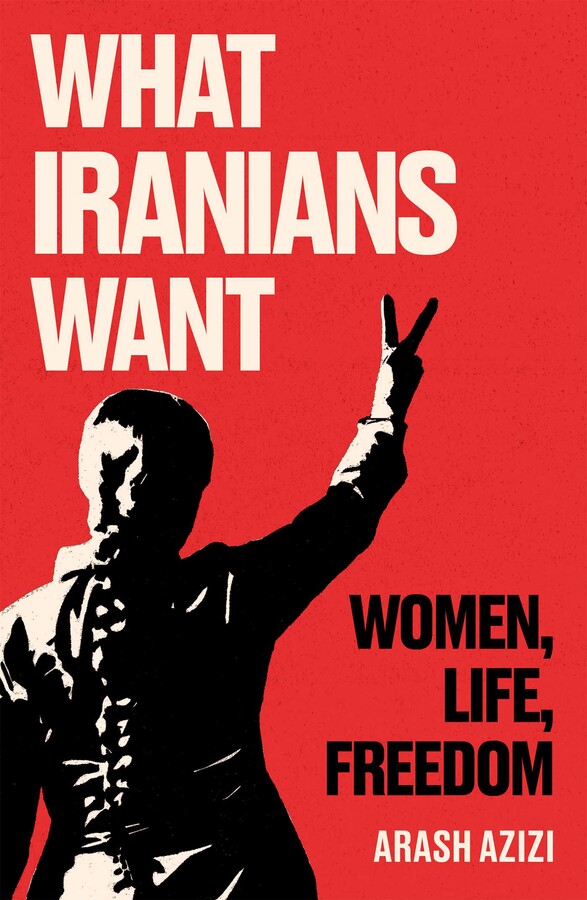Much has been written about Iran’s Woman, Life, Freedom movement as a progressive rebellion against patriarchy. The 16 September 2022 death of Mahsa Amini in custody of the morality police sparked protests across the country and outrage around the world. Amini’s death was the trigger for an instinctual response to the late President Ebrahim Raisi’s stultifying governance.
But despite the dominant international view of Iran as a closed theocracy, it was only via a functioning civil society that the revolt was made possible. As had earlier occurred with the student protests of 1999, the Green Movement in 2009, and the 2017-19 demonstrations, the latest iteration of demonstrations put a spotlight on the vivacity of what the Council on Foreign Relations once described as “one of the region’s most robust civil societies”.
Arash Azizi’s What Iranians Want: Women, Life, Freedom is arguably the most solid work of non-fiction so far explaining the socio-political backdrop against which this uprising took place. In the absence of factual reporting and nonpartisan scholarship about Iran, this meticulously researched book is a much-needed reference.
Azizi acknowledges that he belongs to a generation of Iranians “whose life has been defined by dashed hopes for reform and progress”. The September 2022 protests negated the idea of gradual reform being the sole conduit of effecting lasting change. But even when it unravelled, the uprising wasn’t meant to be a violent repudiation of the status quo for performative purposes.
“No one came out on the streets to die; no one dreamt of heroic martyrdom. All they wanted was a country where they could live freely,” Azizi writes of the lost hopes of young Iranians.
Sixteen-year-old Sarina Esmaeilzadeh was one of them, whose dreams were as simple as being able to sing out loud and go to a football stadium. She was killed on 23 September under baton blows by the security forces.

The genesis of the reform movement came in 1997 when Mohammad Khatami was elected president, rejuvenating hopes of democratic change. Under Khatami, liberal-minded journalists found an opportunity to launch nonconformist newspapers challenging the establishment. Women activists achieved a semblance of autonomy, such as in March 1998 when the first exhibition of female book publishers was hosted in Tehran. Then came the Cultural Center for Women, the first women-led, nondenominational institution established post-1979. The group was the main organiser of the International Women’s Day events. In a theocracy that doesn’t recognise global occasions, marking 8 March was an avant-garde venture.
Iranian feminists gained traction, but there was also a limit to the judiciary’s tolerance. Over time, women activists viewed Khatami with more suspicion as they sensed he was trampling their ideals. The early signs of betrayal surfaced when Khatami spurned the distinguished lawyer Shirin Ebadi being named the 2003 Nobel Peace Prize laureate, saying the award was mostly a political recognition. He failed to issue a congratulatory message, and some said it was a case of personal jealousy.
Azizi explains that along with compulsory hijab enforcement being weaponised for social suffocation, other sophisticated forms of repression have also been deployed in Iran – the idea being that a nation that is exhausted won’t rise to demand transformation.
A case in point is the imprisonment of conservationists affiliated with the Persian Wildlife Heritage Foundation on spurious espionage charges. Their mandate has been to preserve the rare Asiatic cheetahs whose only habitat is Iran. Their advocacy for wildlife cost them their freedom, and in the case of Kavous Seyed-Emami, his life.
In 2017, Kaveh Madani, an internationally renowned environmental scientist teaching at Imperial College London, was invited by President Hassan Rouhani to serve in the administration. Rouhani wished to reassert himself as the leader who was reversing the nation’s brain drain crisis. Madani gave up his vaunted job and became the deputy head of the Department of Environment. After eight months, the Revolutionary Guards contrived to call him a CIA asset. He left Iran.
Unlike the doomsayers who’ve been confidently predicting the imminent collapse of the regime for decades, Azizi doesn’t pretend to have a crystal ball.
On why the establishment took on the environmentalists, Azizi writes, “ecological activism has a curious relationship to politics. Its targets can often be key economic and security interests.” This is true. Some of these activists had openly criticised the detrimental environmental impacts of Iran’s nuclear escapade. The ruling elite could not condone such a critical debate.
As the revolutionary fervour of the 1980s subsided, new social contracts and counter-currents were introduced by the middle-class intelligentsia. A resilient civil society is what differentiates Iran not only from the hermit kingdom of North Korea, but also autocracies such as Russia. In separate chapters, Azizi profiles the propellers, namely the labour movement, entertainment industry, and religious intellectuals.
The book is a mature survey of the prospects of change in a country with a torn social fabric.
Unlike the doomsayers who’ve been confidently predicting the imminent collapse of the regime for decades, Azizi doesn’t pretend to have a crystal ball. He enables the reader to draw informed conclusions about those currently ruling the country known as the provenance of the world’s first charter of human rights.
Reading him, we understand that it is likely that the position of the supreme leader will be terminated and replaced with another arrangement. The state may acquiesce to limited social liberalisation to extend its lifespan. And there is every chance the theocracy will end.
What Iranians Want: Women, Life, Freedom by Arash Azizi (Simon & Schuster, 2024)

